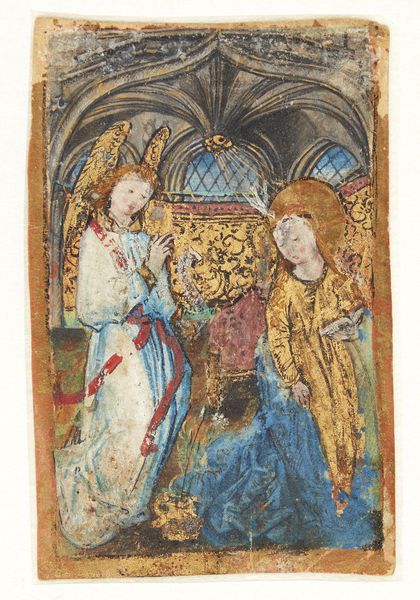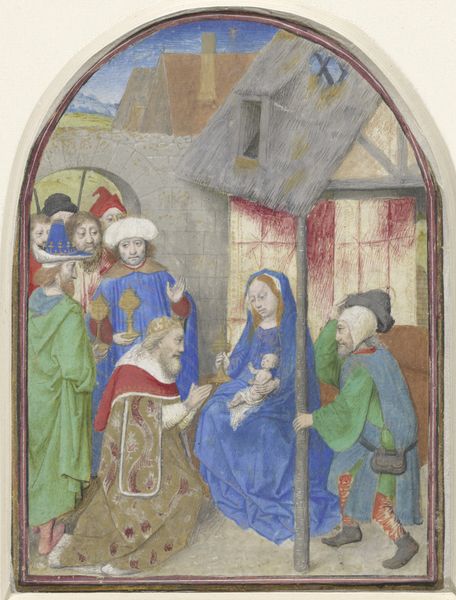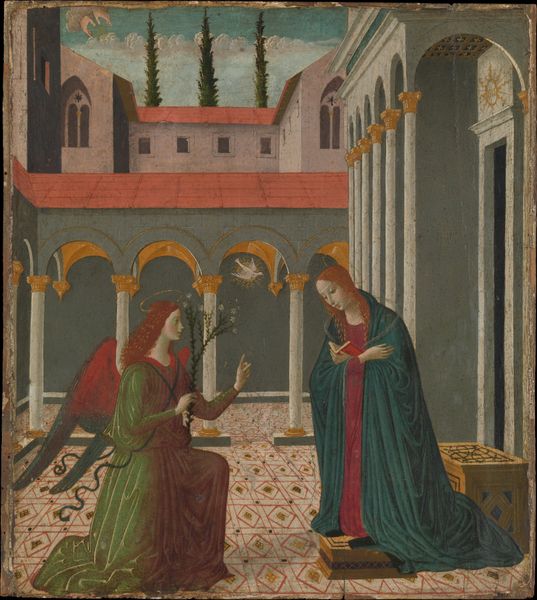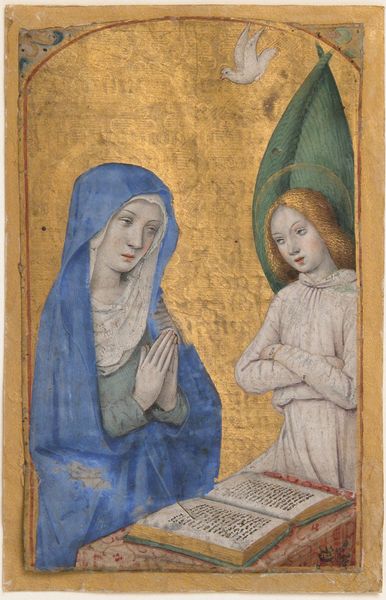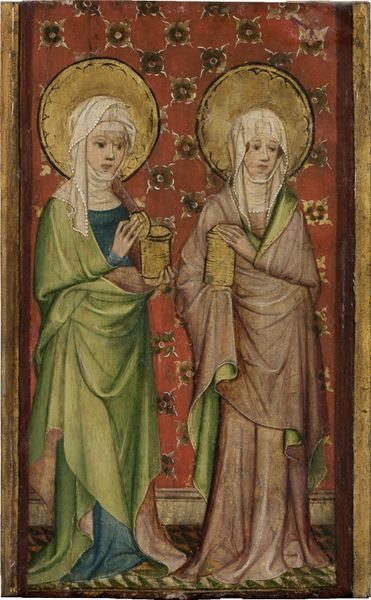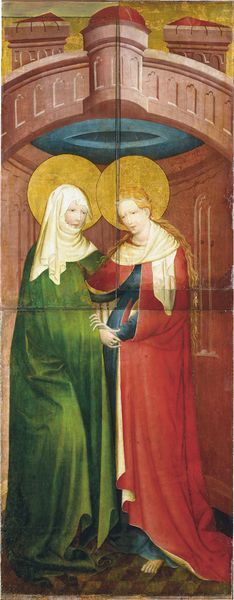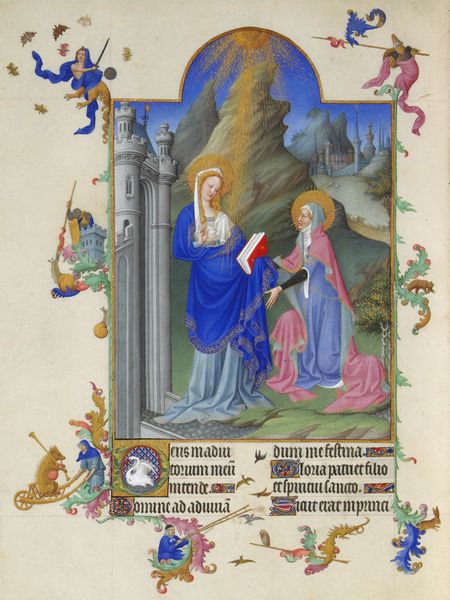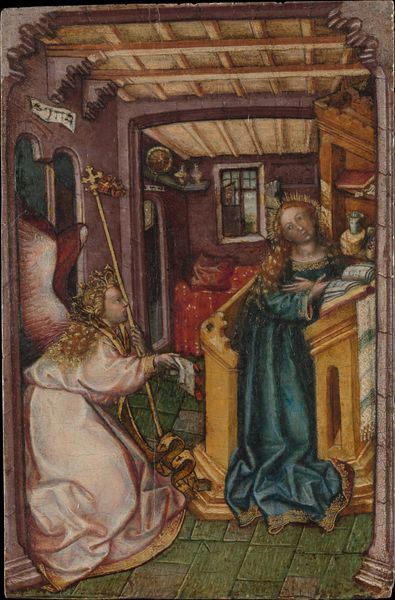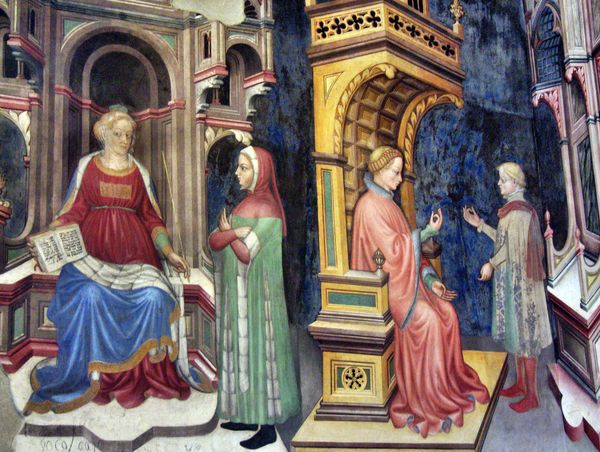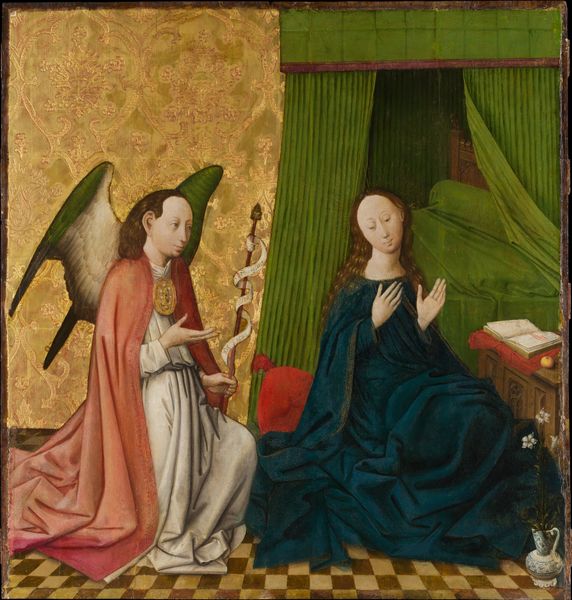
tempera, painting, oil-paint
#
portrait
#
allegory
#
narrative-art
#
tempera
#
painting
#
oil-paint
#
figuration
#
11_renaissance
#
oil painting
#
northern-renaissance
#
portrait art
#
virgin-mary
#
watercolor
#
angel
Dimensions: 6 15/16 x 5 11/16 in. (17.7 x 14.4cm)
Copyright: Public Domain
Editor: This is Gerard David’s "The Annunciation," created sometime between 1507 and 1513. It looks like it's tempera and oil on wood. There’s such incredible detail! What strikes me most is the quality of the robes... I’m curious how David would have achieved such depth with the limited materials available. What do you make of this piece? Curator: I find myself focusing on the material conditions and the labor involved in creating a painting like this in the early 16th century. Consider the sourcing of pigments, for example. The ultramarine blue of Mary's robe would have been derived from lapis lazuli, a precious stone mined in remote locations and transported across vast distances, reflecting not only artistic skill but also complex trade networks and economic systems. Editor: So the materials themselves tell a story. That makes sense. What about the wood panel? Was that significant? Curator: Absolutely! The choice of wood, the process of preparing the panel, the application of gesso – each stage represents a deliberate act, informed by tradition and technique. We see in the work the artist's manipulation of materials, revealing his engagement with craft and the cultural values attached to it. Where did the wood originate? How was it prepared to receive paint? Each question we ask deepens our understanding. Editor: It’s easy to overlook those material realities when focusing on the religious narrative. I never thought about the sourcing and labor this way. Curator: And let’s not forget the social context. Who commissioned this piece? Where was it originally displayed, and for what purpose? These are crucial questions when attempting to situate the work within its historical moment and understand its original meaning and use. Considering all these factors can challenge traditional interpretations. Editor: So by examining the materials and production, we’re not just looking at art, but also at the economic and social conditions of the time. Fascinating! Thank you. Curator: Indeed. Shifting our perspective toward these elements offers us new avenues for understanding the artistry and its context. It makes me want to re-examine many of the other pieces in the collection.
Comments
No comments
Be the first to comment and join the conversation on the ultimate creative platform.

